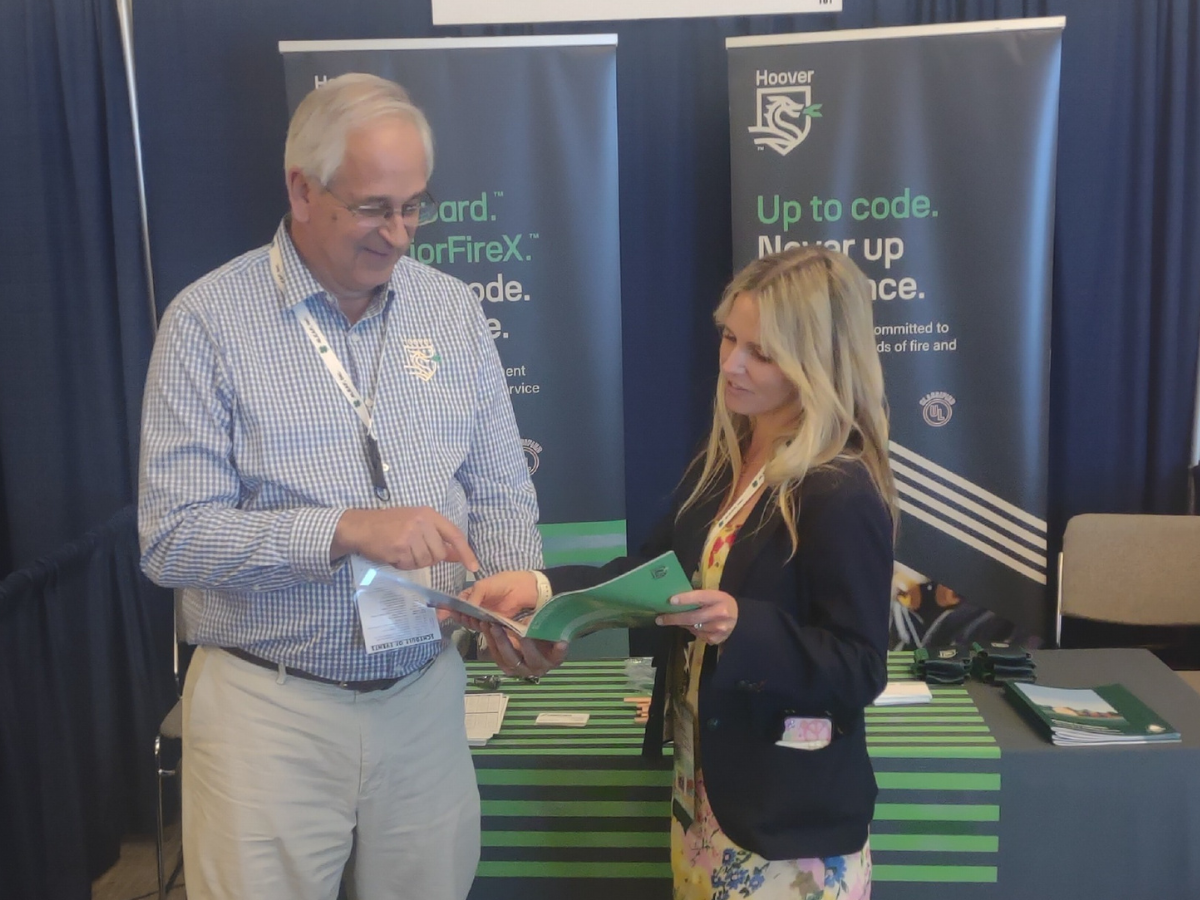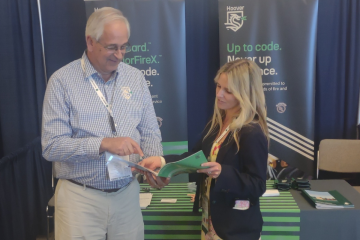On Friday, June 28th, the team at Ingui Architecture in downtown Manhattan gathered for a lunch and learn session led by Jim Gogolski, Architectural/Code Specialist for Hoover Treated Wood Products. The session, part of a 1-hour continuing education program, was a deep dive into the advantages and applications of fire-retardant-treated wood (FRTW). Hoover Treated Wood Products, a Registered Provider of continuing education by the AIA Continuing Education System, showcased its commitment to industry leadership and education through this program.

Jim Gogolski, a seasoned expert in wood science and a passionate advocate for sustainable building practices, first met Ingui Architecture at the Build New York trade show in February. There, he met one of the architects from the firm and discussed the potential of FRTW. This conversation sparked interest and led to the planning of the lunch and learn session.
Jim shared, “I was a Wood Science major in college. This is an extension—telling designers about how to design with wood.”
The presentation delved into several crucial topics, such as the differences between fire-retardant-treated and preservative-treated wood, the significance of flame spread and smoke developed ratings, and the importance of the ASTM E84 extended tunnel test. Jim also touched on the concepts of suitable design, carbon sequestration, and the renewable nature of wood as a resource.
Jim structured his talk around five key areas. He started with an introduction, then moved on to explain the treating process. Next, he shared insights from research and testing before discussing real-world applications in action. Finally, he wrapped up with some practical recommendations.
The goal was to highlight FRTW as a natural choice for construction, emphasizing that wood takes less energy to produce than other materials, sequesters carbon, and promotes better-managed forests.
“For every ton of wood, it takes half a ton of CO2 out of the atmosphere,” Jim explained. “Alternative building materials often release CO2 in their manufacturing process – sometimes one ton of CO2 for every one of product produced.”
Another crucial aspect of the session was understanding the building code requirements related to FRTW. Jim provided detailed information to help architects navigate the International Building Code, covering allowable applications, labeling requirements, differences from untreated wood and noncombustible products in fire scenarios, and the advantages of using FRTW.
In urban environments like New York City, where fire safety is paramount due to the density and structure of buildings, FRTW offers a reliable solution.
Jim highlighted its applications in both interior and exterior settings, noting, “In NYC, near the property line, wood siding needs to be fire-retardant-treated. Our product can do this—we have an exterior product that is fire-retardant-treated and can be exposed to the weather.
Jim’s enthusiasm for wood and education was evident throughout the presentation.
“There’s more being taught in colleges now than before. However, when architects get a job designing with wood, many need an education,” he noted. Despite the rise of virtual programs, Jim expressed a preference for in-person sessions, valuing the direct engagement and interaction. “I like talking to people about wood. I prefer being in person than virtual. But you can reach a lot of people with a virtual program.”
Jim’s dedication to educating architects, building code officials, and fire officials about FRTW demonstrates Hoover Treated Wood Products’ commitment to excellence and thought leadership in the industry. By providing valuable insights and up-to-date information based on the 2018 edition of the International Building Code, Hoover ensures that architects are well-equipped to make informed decisions about sustainable and fire-retardant building materials.
As the session concluded, the architects at Ingui Architecture left with a deeper understanding of FRTW and its benefits. Jim’s expertise and passion left a lasting impression, reinforcing Hoover Treated Wood Products’ position as a leader in the field.
Through education and advocacy for sustainable building practices, Hoover continues to lead the way in promoting the use of fire-retardant-treated wood as a natural and effective choice for construction.
As Jim aptly put it, “Today’s architects are concerned with the environmental impacts. Wood is very favorable.”



